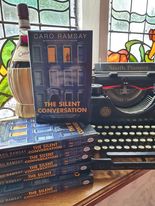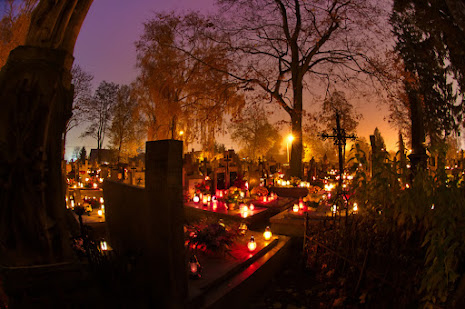Back when I wrote my first novel, I think it had about twenty-five chapters, each with scene breaks, plus an epilogue to explain what happened in the aftermath. These days, I’m more likely to write the same number of words but have a hundred and twenty-five chapters.
There’s no doubt that, when you look at the Table of Contents that appears in every eBook, that great long list of sequential numbers is lacking something in appeal.
At one point, it seemed that books always had chapter titles—sometimes instead of numbers, sometimes as well. If you pick up a Margery Allingham, or a Sir Arthur Conan Doyle, you tend to find chapter titles more often than not.
Some contemporary writers go in for chapter
The reason this subject came up was because of my current work-in-progress—the follow-up to The Last Time She Died. I usually create separate Word documents for each chapter while I’m writing it. Once it’s more or less done, I drop it into the file containing the entire book so far. It just makes things a bit easier to deal with. Because, when you’re dealing with a third-person, multiple-viewpoint narrative, it’s very easy to get hopelessly lost, I find. So, when I name the file, as well as the chapter number and the character whose POV I’m following, I’ve now also started adding a word or two to tell me what the chapter’s about.
But that’s made me wonder if I should be adding that kind of chapter title into the book. The closest I’ve come to this was in the second Lakes crime thriller, Bones in the
I thought I’d take a quick look through some of the titles written by my fellow Murder Is Everywhere bloggers, to see how they handled the subject of chapters and what to call them.
In Blood Tango, Annamaria Alfieri begins the book in Buenos Aires
Cara Black’s long-running Aimée Leduc series, set in Paris, does not have chapter numbers at all. Cara uses the day and approximate time, so Murder in the Marais, for example, begins with ‘Paris: November 1993’, then has ‘Wednesday’ as the Part title, and ‘Wednesday morning’ as the chapter title. A later book, Murder in the Bastille, has ‘Paris: October 1994’, then goes straight into the chapter titles of ‘Monday Evening’, ‘Later Monday Night’, ‘Wednesday Afternoon’, etc.
Cara’s standalone novel, Three Hours in Paris, has—by its very nature—a compressed timescale. Here Cara sets the scene with ‘Sunday, June 23, 1940 – Nine Days into the German Occupation of Paris –
Caro Ramsay also uses dated chapters for some of her Anderson and Costello Scottish-set detective series. Absolution, for example, starts with ‘Anna – Glasgow, 1984’, then ‘Alan – Glasgow, 2006’ and moves on through seven days from September 30 to October 7, plus an epilogue. By The Sideman, however, Caro is using numbering, with the date as a sub-title for each chapter. Was this a conscious change?
Leighton Gage, Jeff Siger’s Andreas Kaldis Greek series, Susan Spann's Hiro Hattori series—set in 16th century Japan—my own Charlie Fox novels, and Sujata Massey’s contemporary, Japanese-set Rei Shimura books all use basic chapter numbering. Nice, simple, and it works.
For her Perveen Mistry series, set in 1920s' India, however, Sujata has used the chapter title approach. The opening of The Widows of Malabar Hill has ‘1921 – 1 – A Stranger’s Gaze – Bombay, February 1921’. That seems to cover all the bases!
For the first book in Kwei Quartey’s Emma Djan series, The Missing American, he uses numbered Parts and chapters, with a sub-heading of the date and place: ‘Chapter One – 4th January, Sekondi-Takoradi, Ghana’. His Inspector Darko Dawson novel, Murder at Cape Three Points, on the other hand, sticks with chapter numbering.
The Michael Stanleys’ African-set Detective Kubu novels have either numbered chapters or numbered Parts and chapters. But their standalone, Dead of Night uses numbered chapters with Part titles of the places they are set. So Part 1 is Duluth, Minnesota. Part 2 is South Africa, and so on.
For The Last Time She Died, I went with a prologue and then the usual numbering, although I did need sub-headings for dates on some
But still, I’m tempted by those chapter titles. And when I looked up Rick Riordan’s Magnus Chase and the Sword of Summer I'm even more tempted. Any one of these would make you want to read that chapter, so I will list some of them without further comment:
1. Good Morning! You’re Going to Die
2. The Man with the Metal Bra
3. Don’t Accept Rides from Strange Relatives
4. Seriously, the Dude Cannot Drive
5. I’ve Always Wanted to Destroy a Bridge
6. Make Way for Ducklings, or They Will Smack You Upside the Head
7. You Look Great Without a Nose, Really
8. Mind the Gap, and Also the Hairy Guy with the Axe
9. You Totally Want the Minibar Key
10. My Room Does Not Suck
11. Pleased to Meet You. I will Now Crush Your Windpipe
12. At Least I’m Not on Goat-Chasing Duty
Not a lot more you can say to that, is there?
This week’s Word of the Week is


























































